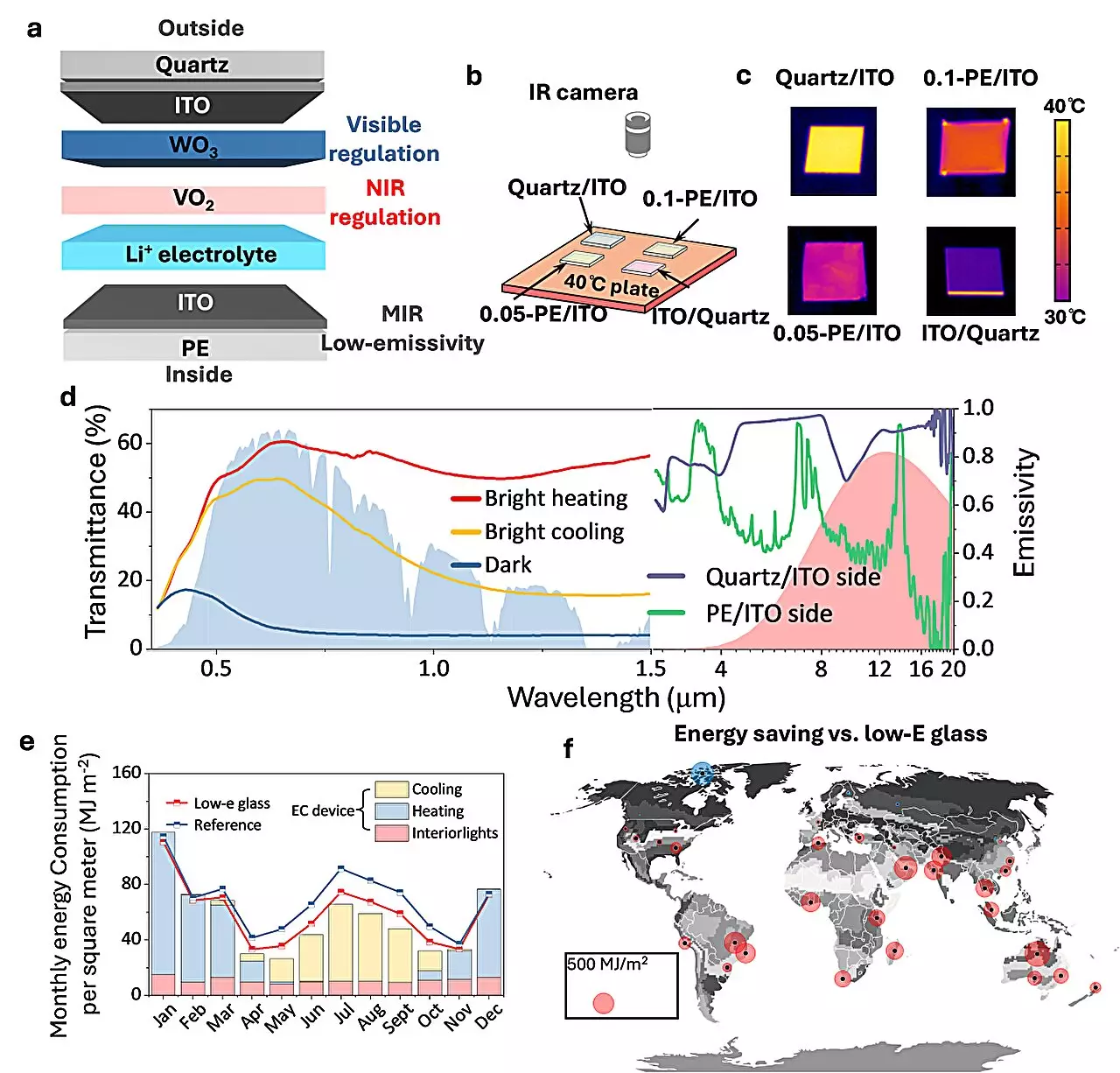In a groundbreaking study published in Nature Sustainability, a research team led by Prof. Cao Xun has made significant strides in the development of energy-saving windows. With the goal of reducing the energy consumption of buildings, the team focused on improving the performance of electrochromic (EC) smart windows.
Traditional EC windows have been limited in their ability to effectively control solar radiation and outdoor temperature. However, the researchers designed a new electrochromic smart window system that utilizes a VO2-WO3 tandem film and a solid electrolyte. This innovative structure allows for the simultaneous control of solar heat and sunlight transmittance, resulting in significant energy savings.
One of the key advantages of the new system is the ability of Li+ to diffuse along the depth of VO2 and WO3, independently regulating the near-infrared (NIR) and visible transmittance of sunlight. Unlike traditional WO3-based systems, VO2 offers non-volatility, making it more efficient in maintaining the state of the window.
Energy Efficiency at its Best
Through simulations, the research team demonstrated that the new electrochromic smart windows outperform commercial low-E glass in terms of heating and cooling energy savings in various climates worldwide. Moreover, outdoor experiments conducted in Sanya and Shanghai showed a significant decrease in indoor temperatures, leading to substantial energy savings throughout the day.
The development of this new EC window system represents a major breakthrough in energy-saving technology for buildings. With its ability to control both solar heat and sunlight transmittance effectively, the future of smart windows looks promising. As efforts continue to improve the efficiency and performance of EC windows, the potential for widespread adoption in buildings worldwide is within reach.


Leave a Reply
You must be logged in to post a comment.